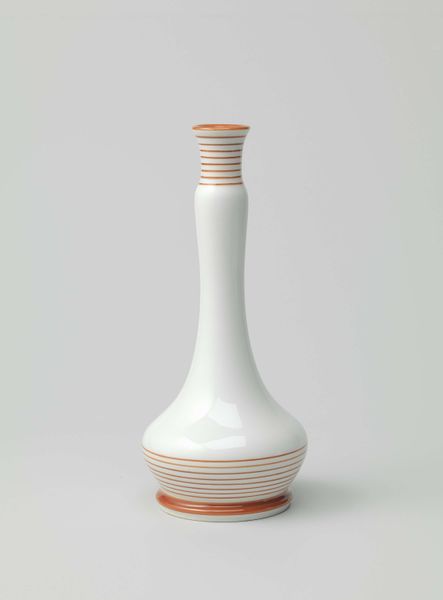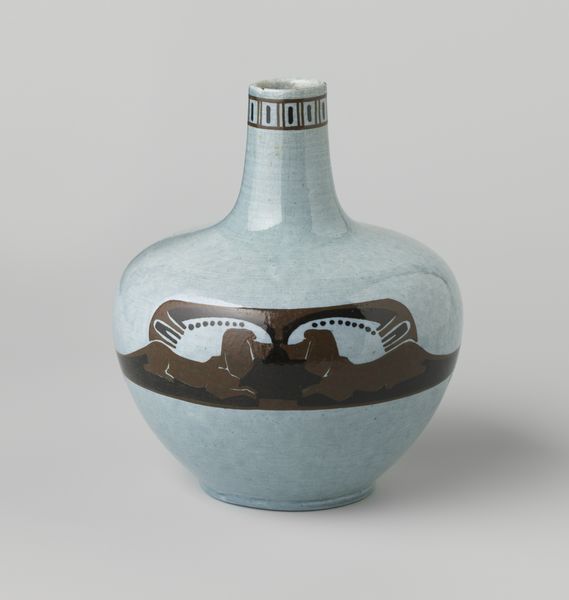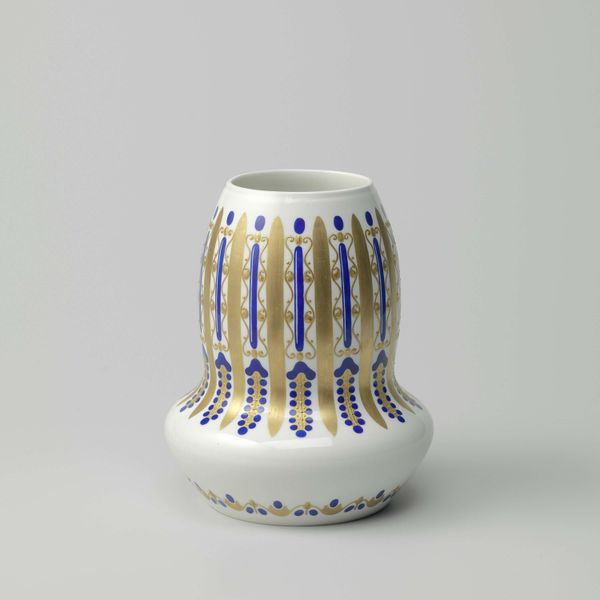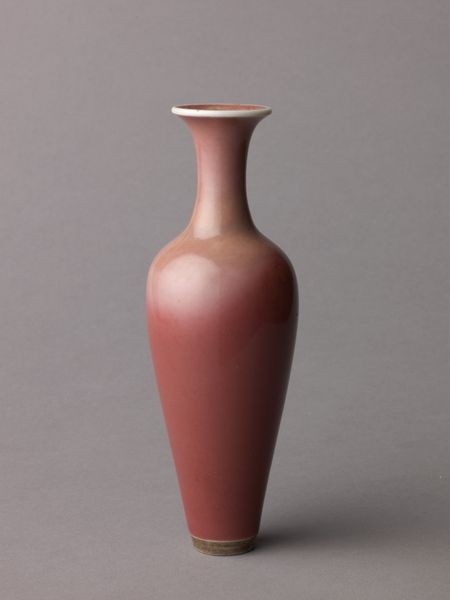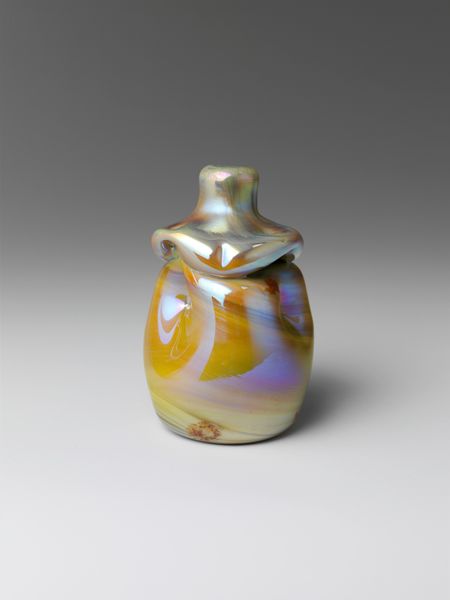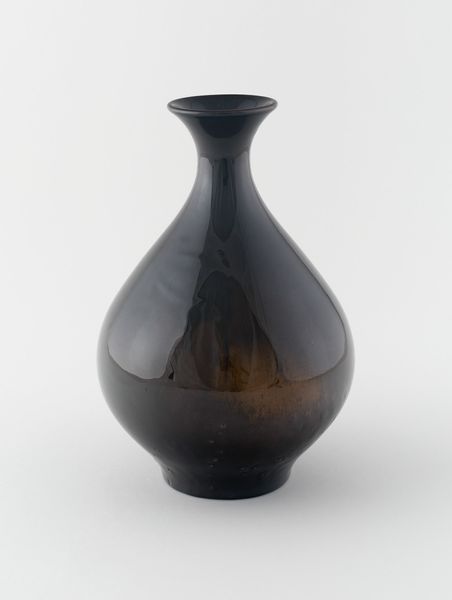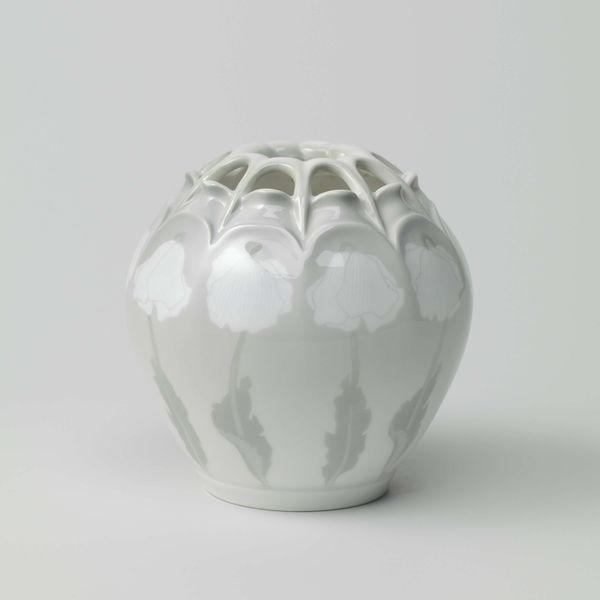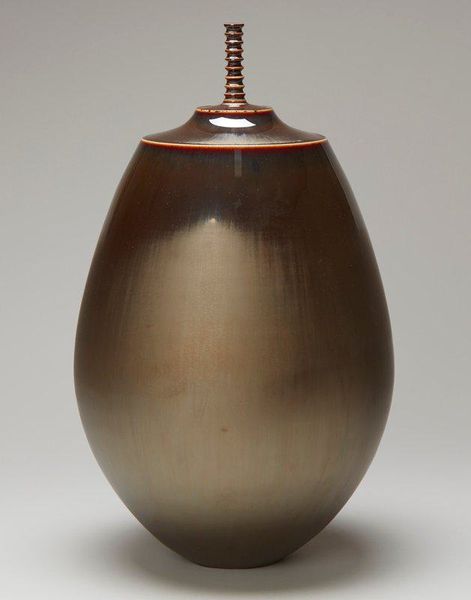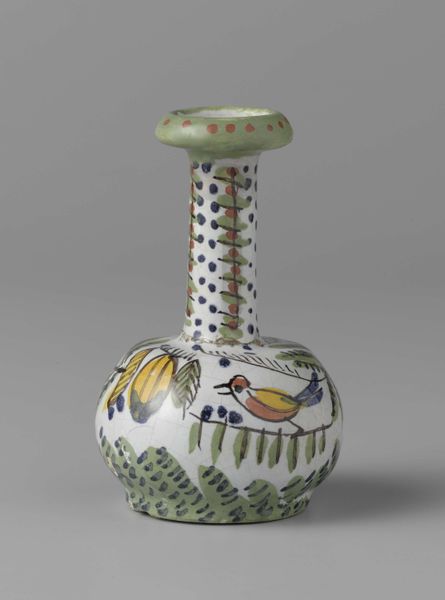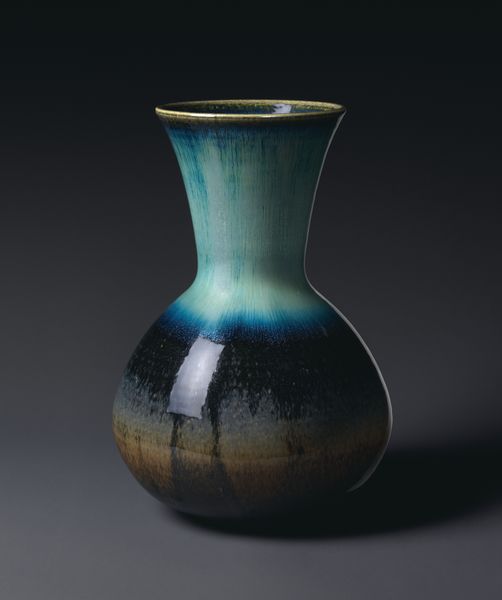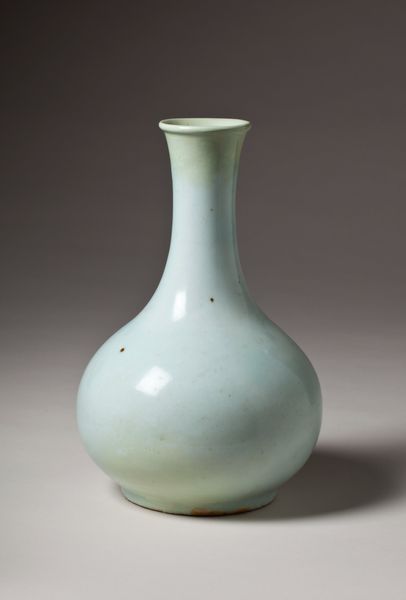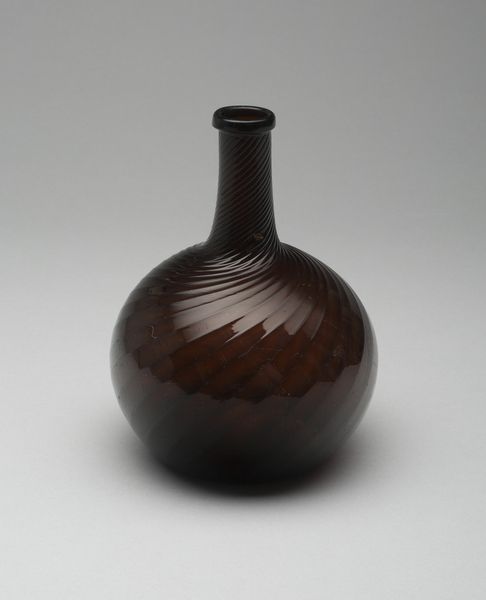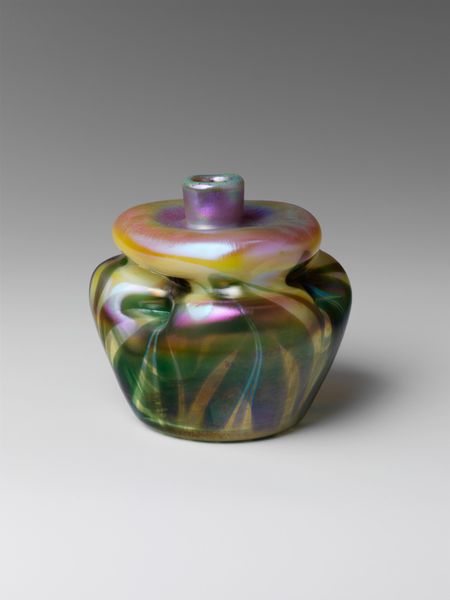
ceramic, earthenware
#
art-deco
#
ceramic
#
earthenware
#
geometric
Dimensions: height 14.5 cm, diameter 2.8 cm, diameter 8.8 cm, diameter 4.5 cm
Copyright: Rijks Museum: Open Domain
Curator: Here we have a ceramic vase, an earthenware creation dating to around 1925 by the Königliche Porzellan Manufaktur. What are your initial thoughts? Editor: Immediately, I notice the controlled repetition of those geometric lines, like disciplined rows marking out a measured existence. It gives it a calming, almost austere feel, but that little splash of color near the top disrupts it. Curator: That controlled design speaks volumes, doesn’t it? The Art Deco period saw a push towards streamlined forms and industrial materials reflected not just an aesthetic choice but an ethos of embracing modernity and order in a rapidly changing world. And, more broadly, reflecting the societal shifts influencing gender roles. Editor: Absolutely. The vase’s shape—the swelling body giving way to the slender neck—combined with those machine-like lines brings into focus questions of craft, labour, and, crucially, reproducibility. We think of ceramics, porcelain, as things made precious through craft. Curator: Precisely. It embodies that interwar tension—an era yearning for stability yet embracing new social norms. What about you? Is it purely an artifact, or do you perceive deeper layers? Editor: No artifact exists outside its material conditions, which inevitably include labor practices and production methods, which intersect with the identities of the involved makers. Looking at this vase I'm forced to ask, “Who had access to its beauty?” Curator: That’s a vital point—it leads to questions about consumer culture and privilege during the period and it's relevance today. Editor: Indeed. Understanding an object’s materiality helps dismantle conventional hierarchies between art, craft, and industry. Ultimately, the vase exists because a ceramic was created and sold to someone who had both space and money. Curator: A thought-provoking examination. Considering both its cultural significance and the often-overlooked perspectives of gender, class, and access adds meaningful layers to our understanding. Editor: Seeing the interplay between the artist's intent, the user’s lived reality, and their connection to wider networks makes it infinitely richer.
Comments
No comments
Be the first to comment and join the conversation on the ultimate creative platform.
